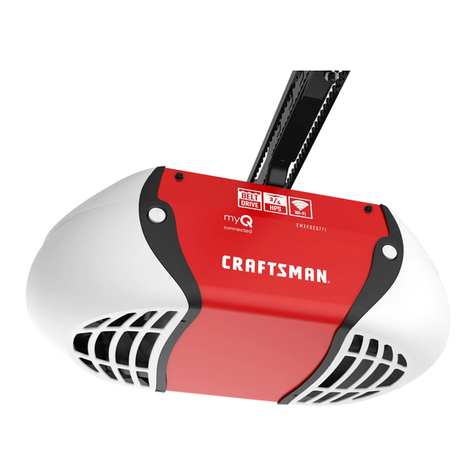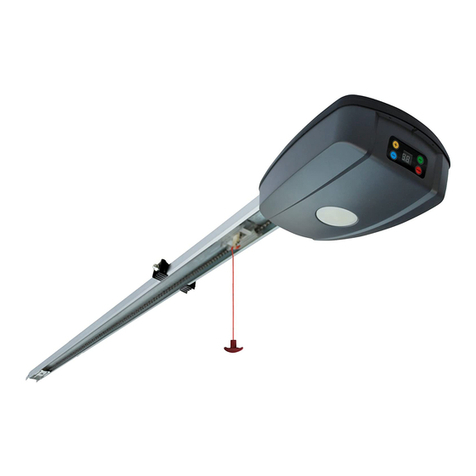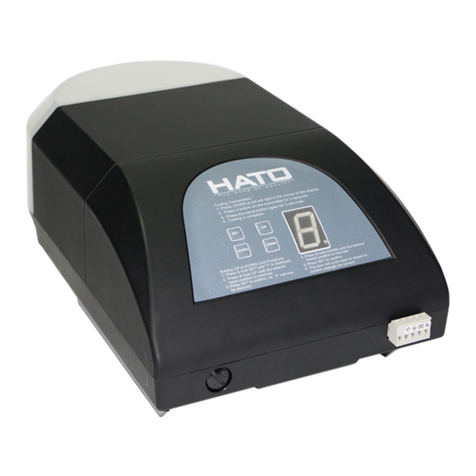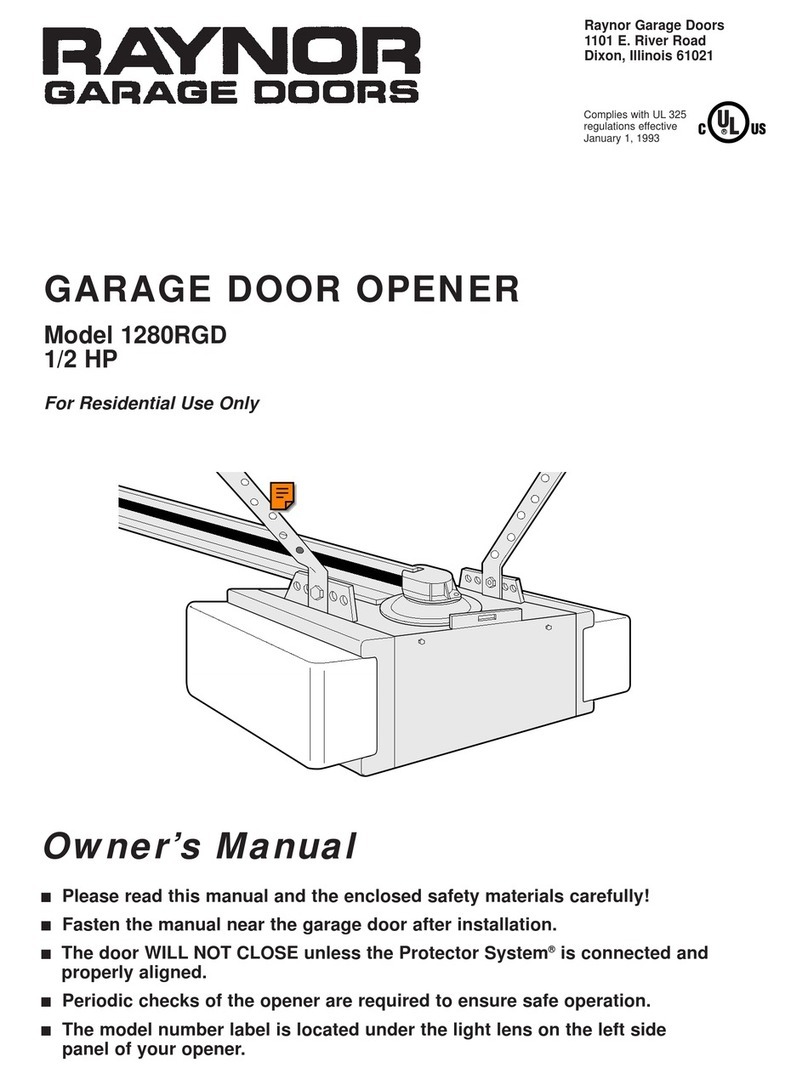- 5 -
IMPORTANT SAFETY RECOMMENDATIONS
15. Subsequent to installation and adjustment, the AGDO the garage door must stop and reverse direction when
it comes into contact with a 35mm high solid object placed on the floor under the garage door.
16. The correct function of the Safety Obstruction Force System should be checked on a monthly basis.
17. Never use the AGDO unless the garage door is in full view and free from any object which may impede the
movement of the garage door such as cars, children and / or adults.
18. Never allow children to operate the AGDO.
19. Never operate the AGDO when any persons are under or near the path of the garage door. Children must be
supervised at all times when near the garage door and when the AGDO is in use.
20. Never attempt to disengage the AGDO to manual operation when there are children / persons and / or solid
objects including motor vehicles under or near the path of the garage door as the garage door may fall sharply
upon Manual Release from the AGDO.
21. Never attempt to open or close the garage door by pulling on the Engage / Disengage Cord.
22. Never attempt to make any repairs or remove covers from the AGDO without first disconnecting the power
supply cord from main power supply.
23. Removal of the AGDO’s protective covers must only be performed by a technically qualified person.
Attempting to remove the protective covers or repair the AGDO without suitable technical qualification may
result in severe personal injury, death and / or property damage.
24. For additional safety we strongly recommend the inclusion of Safety Beams. Although the AGDO
incorporates a pressure sensitive Safety Obstruction Force system the addition of Safety Beams will greatly
enhance the operating safety of an automatic garage door and provide additional peace of mind. In some
countries it is a mandate of law to fit Safety Beams. It is the sole responsibility of the owner / installer to fit
Safety Beams in those countries that so require.
25. Always ensure that the garage door is fully open & stationary before driving in or out of the garage.
26. Always ensure the garage door is fully closed and stationary before moving out of its view.
27. Adjustments to the Safety Stop / Reverse Force settings must only be carried out by a technically qualified
person. Attempting to adjust the settings without suitable technical qualification may result in severe personal
injury, death and / or property damage.
28. Keep hands and loose clothing clear of the AGDO and garage door at all times.
29. In order for the Safety Obstruction Force system to function it must first encounter an obstruction in the form
of an object / person on to which some force MUST be exerted. As a result the object / person / garage door
may suffer DAMAGE AND / OR INJURY.
30. The Safety Obstruction System is designed to work on STATIONARY objects only. Serious personal
injury, death and / or property damage may occur if the garage door comes into contact with a moving
object during an open or close cycle
Warranty Exclusions
No claims whatsoever will be recognized under the terms of the AGDO’s warranty which pertain to
damage, injury, cost or expense, suffered by persons and / or to property, which either directly or
indirectly arise out of any one of the following occurrences;
i. Failure to install the AGDO in accordance with the captioned instructions.
ii. The garage door coming into contact with a moving object. (refer Point 30 in the above)
iii. The AGDO being used for other than a maximum 4 car residential application.
iv. Installing the AGDO on an improperly balanced and / or poorly functioning and / or misaligned
garage door. (refer Point 3 in the above)
v. Failure to adequately lubricate the garage door counter balance springs. (refer point 6 in the
above)
vi. Failure to adequately fix the GDO to the garage structure
vii. Attempting to open or close the garage door by pulling directly on the Manual Release Cord.
viii. Manually releasing the garage door in any position other than when it is fully closed.
ix. Failure to connect the AGDO to a properly earthed power supply
x. Note: Light bulb failures are not covered under the terms of this product’s warranty





























